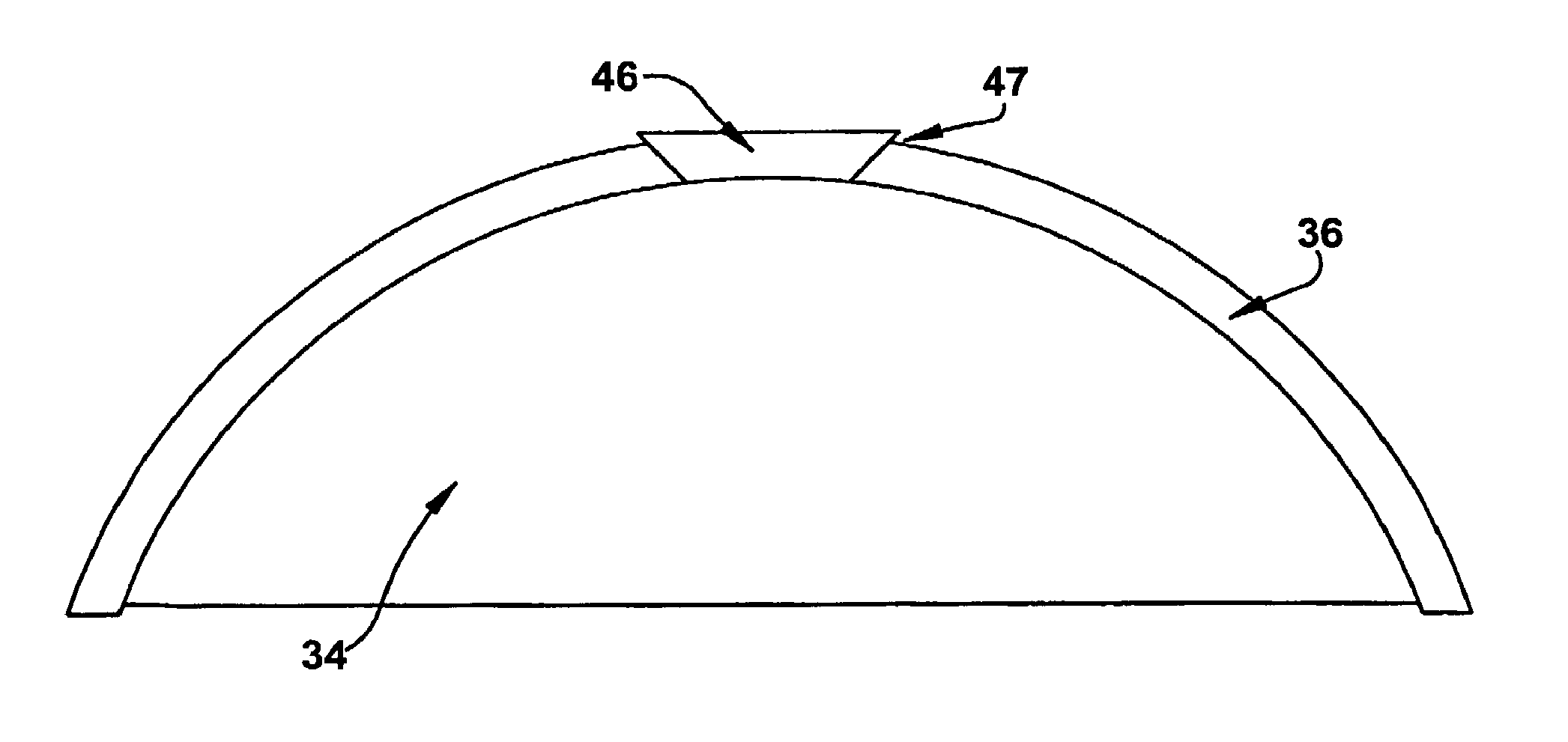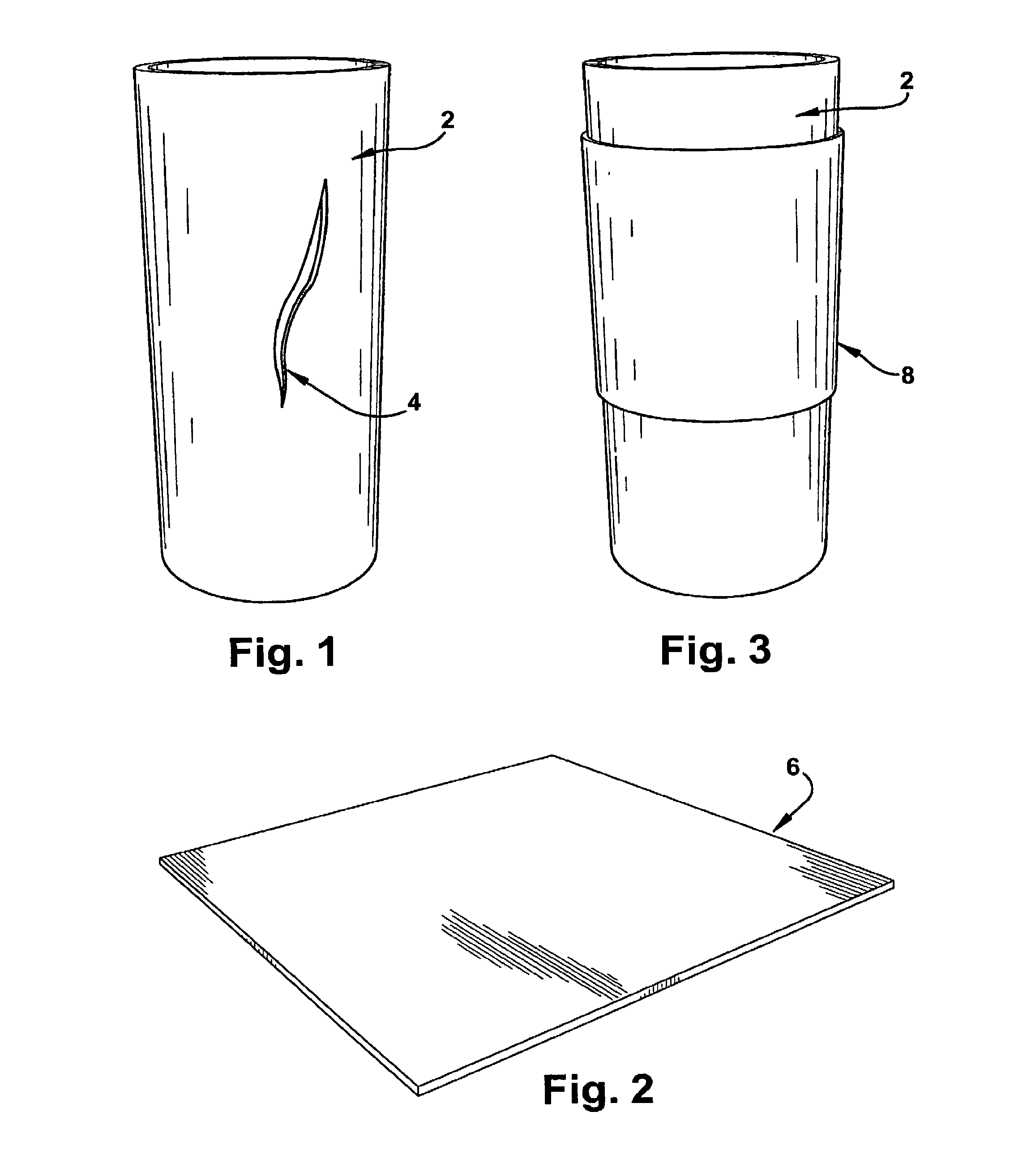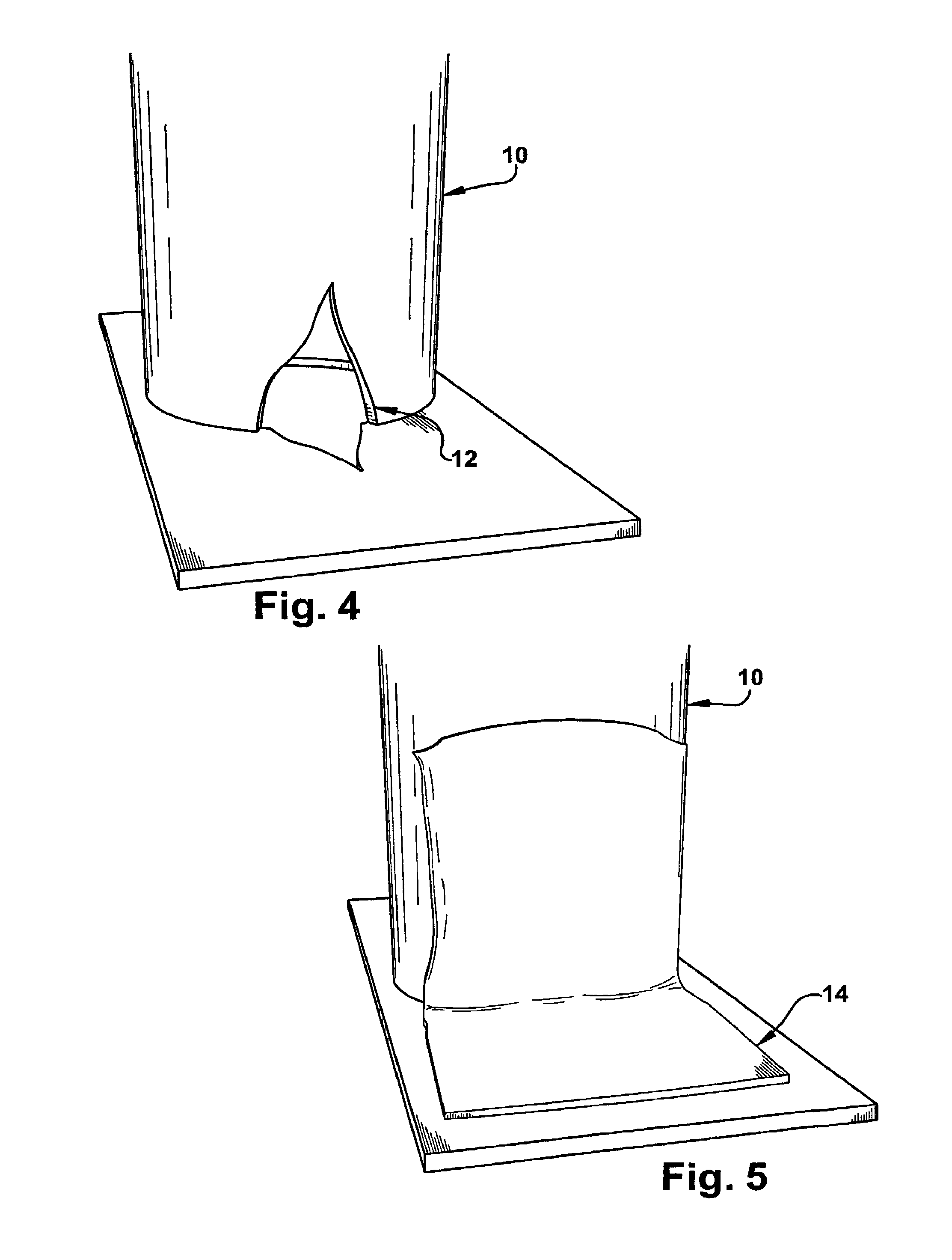Method of making and using shape memory polymer composite patches
a polymer composite and patch technology, applied in the field of repair of components, can solve the problems of composite material losing its molded shape, softening again, etc., and achieve the effect of quick and cheap permanent repair and quick and cheap joining
- Summary
- Abstract
- Description
- Claims
- Application Information
AI Technical Summary
Benefits of technology
Problems solved by technology
Method used
Image
Examples
examples 1 and 2
below describe the exemplary methods of creating pre-form shape memory polymer (SMP) composite parts. Example 3 below shows how to make the thermoplastic used to make the patch with thermoplastic. In general, the preferred SMP is a styrene copolymer based SMP as disclosed in U.S. Pat. No. 6,759,481, however, other types of SMPs such as cyanate ester, polyurethane, polyethylene homopolymer, styrene-butadiene, polyisoprene, copolymers of stearyl acrylate and acrylic acid or methyl acrylate, norbornene or dimethaneoctahydronapthalene homopolymers or copolymers, malemide and other materials are within the scope of the present invention.
example 1
A polymeric reaction mixture was formulated by mixing vinyl neodecanoate (10%), divinyl benzene (0.8%), and styrene (85.2%) in random order to yield a clear solution. Benzoyl peroxide paste (4%) which is 50% benzoyl peroxide, was then added to the resulting solution (all composition are by weight). The resulting solution was kept cold in a refrigerator before use. To prepare the shape memory polymer resin matrix composite sheet, a piece of 3D weave carbon fiber is placed on a glass sheet, ensuring that there are no stray fibers and the carbon fiber piece is smooth. Next, pour some of the polymeric reaction mixture onto the carbon fiber. Use a plastic squeegee or plastic spreader to spread the resin evenly over the entire surface of the fabric. Thoroughly remove air bubbles and straighten the fabric. Place bleeder and breather fabric on top of the resin soaked carbon fiber. Then place the entire system in a high temperature vacuum bag with a vacuum valve stem and apply vacuum thoroug...
example 2
A polymeric reaction mixture was formulated by mixing vinyl neodecanoate (10%), divinyl benzene (0.8%), and styrene (55.2%) in random order to form a colorless solution. Polystyrene granules (30%) were then added to the resulting solution. The resulting mixture was then allowed to sit at room temperature with occasional stirring until all the polystyrene granules were dissolved to give a clear, viscous solution. Benzoyl peroxide (4%) which is 50% benzoyl peroxide was then added to the resulting solution (all composition % are by weight). The resulting polymeric reaction mixture is continually stirred at or near 25° C., not to exceed 30° C. until a clear solution is achieved which can take 2 hours or more. The resulting solution is kept cold in a refrigerator before use. To prepare the shape memory polymer resin matrix composite sheet, a piece of 3D weave carbon fiber is placed on a glass sheet, ensuring that there are no stray fibers and the carbon fiber piece is smooth. Next, pour ...
PUM
| Property | Measurement | Unit |
|---|---|---|
| Temperature | aaaaa | aaaaa |
| Shape memory effect | aaaaa | aaaaa |
| Electrical conductor | aaaaa | aaaaa |
Abstract
Description
Claims
Application Information
 Login to View More
Login to View More - R&D
- Intellectual Property
- Life Sciences
- Materials
- Tech Scout
- Unparalleled Data Quality
- Higher Quality Content
- 60% Fewer Hallucinations
Browse by: Latest US Patents, China's latest patents, Technical Efficacy Thesaurus, Application Domain, Technology Topic, Popular Technical Reports.
© 2025 PatSnap. All rights reserved.Legal|Privacy policy|Modern Slavery Act Transparency Statement|Sitemap|About US| Contact US: help@patsnap.com



